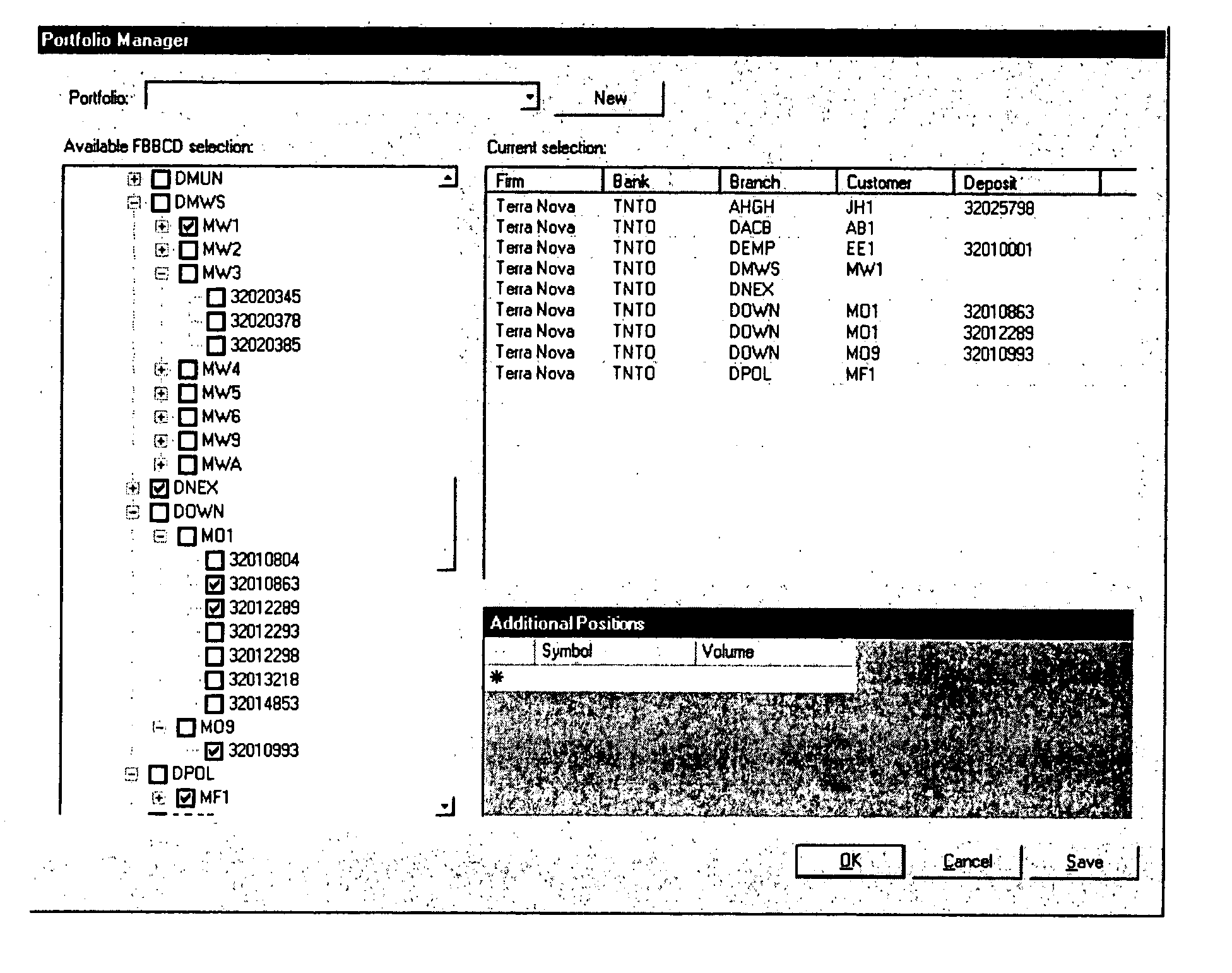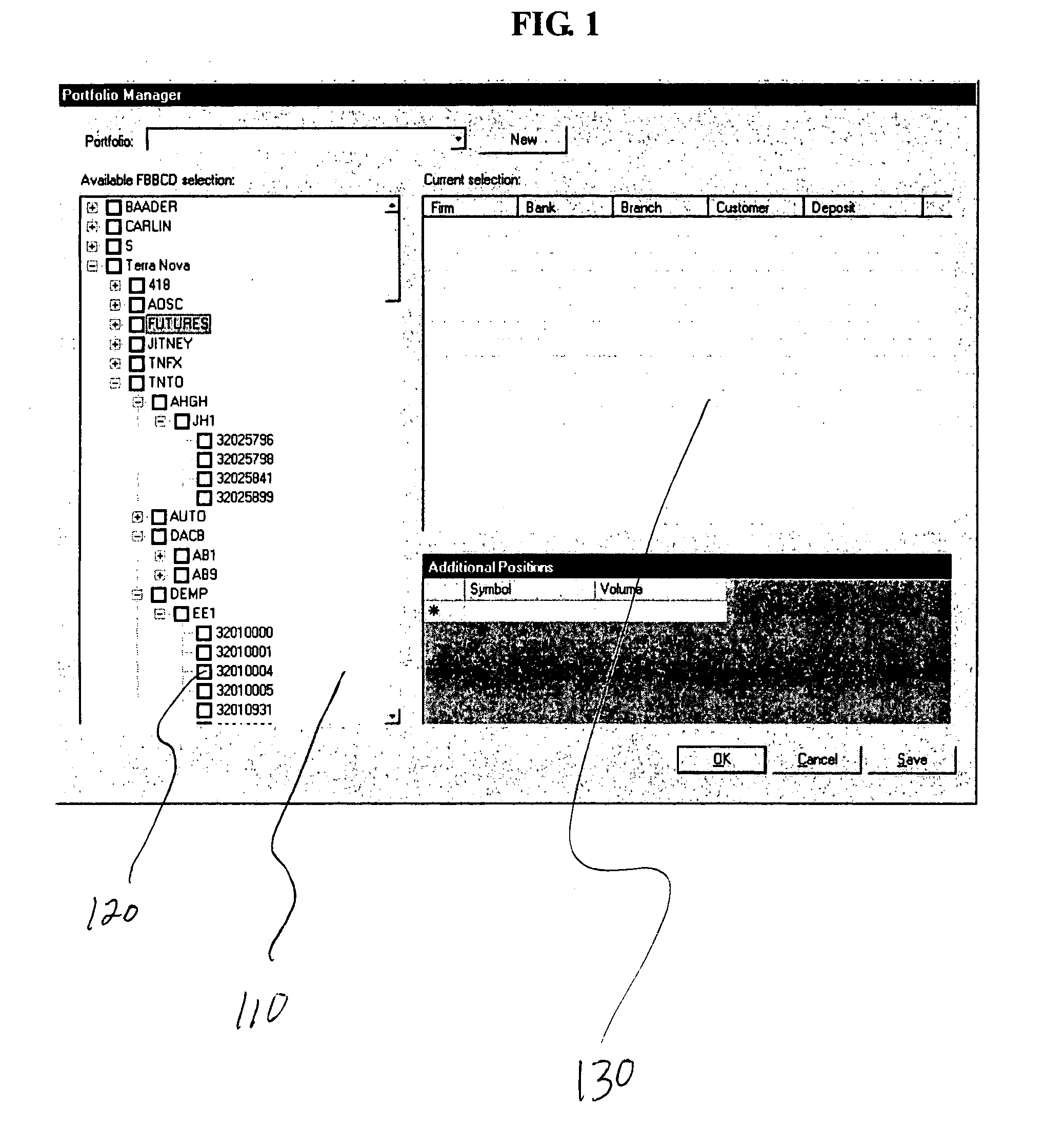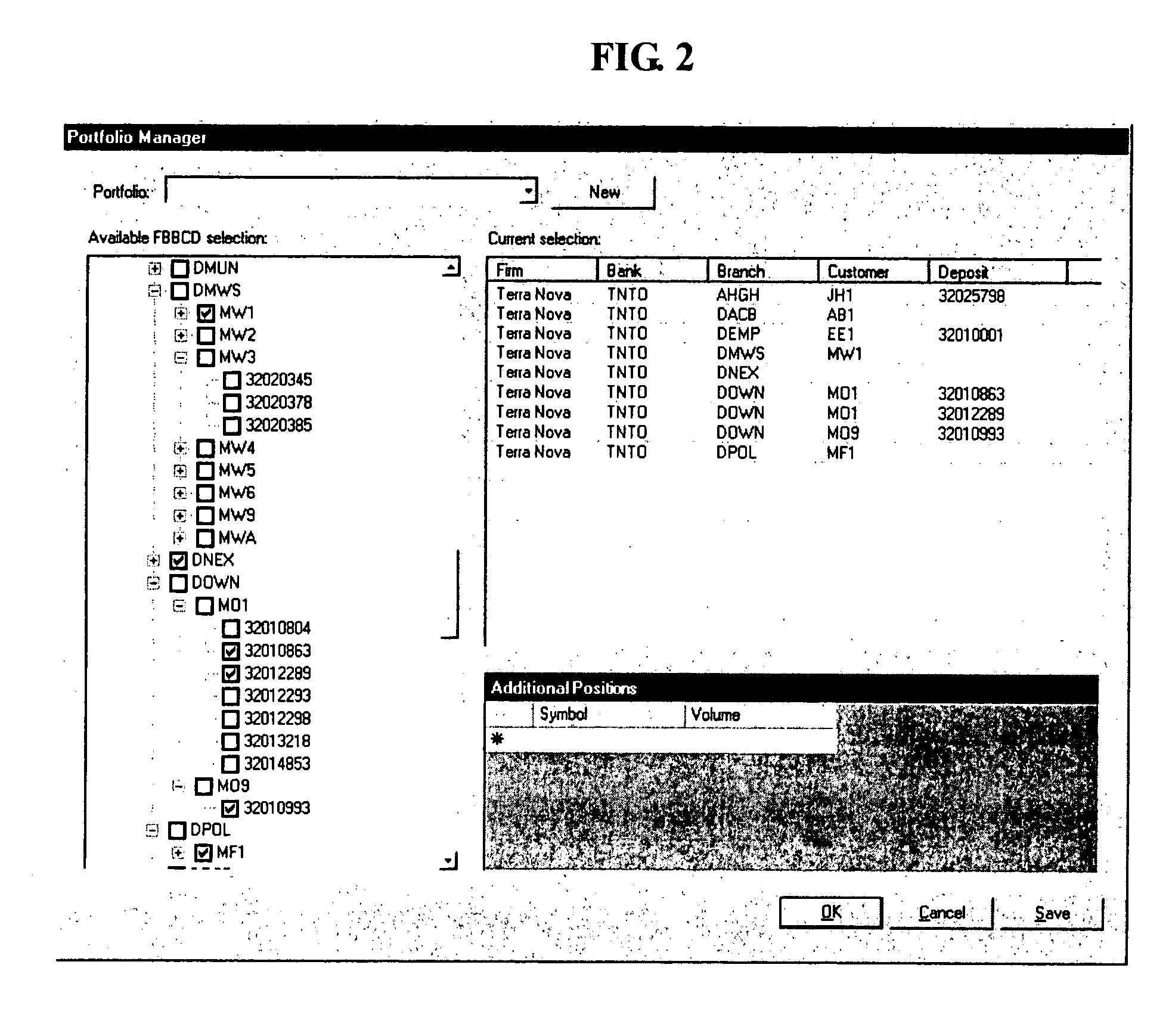[0005] Some financial
software vendors, especially those who specialize in real-time systems, have started to introduce near real-time risk management software to meet the demand for intraday risk management. Leveraging the real-time quoting and trading systems, these risk management systems scan thousands of trading accounts to compute financial measures such as asset market values, gains or losses and margin requirements, using real-time prices and trading activities. Risk reports are generated intraday based on these measures to warn risk managers of potential problems. Today's powerful hardware and modem parallel
programming models deployed in software make it possible to complete such complex tasks in a very reasonable timeframe. For instance, the Credit-at-Risk (CaR) feature comprised in one aspect of the present invention is capable of delivering such reports every minute.
[0006] One of the major challenges facing such surveillance risk management systems is
information overload. The vast amount of information generated by real-
time data on thousands of accounts makes it impossible for risk managers to digest the important information and act quickly.
Software developers have employed many concepts in traditional decision support systems (DSS) as extensions to the core surveillance capability. For example, in one aspect of the present invention, instead of furnishing full risk reports, exception reports based on user-defined criteria may be generated to report a manageable number of problematic items where risk tends to concentrate. Further analytical capabilities may be introduced via
drill-down features, where users can navigate to detailed information intuitively via the items highlighted by exception reports. In many cases, the analytical capabilities themselves become extremely valuable in researching problems and recommending appropriate actions.
[0009] Developed upon and extending the traditional approach for pre-trade risk management, real-time margining, today's margin systems embedded in the trading platform can compute margin requirements based on portfolio risk. For instance, RealTick's risk-based margin
system scans traders' account positions and pending trades in real-time to compute margin requirements on current positions and pending trades, while recognizing hedged positions such as spreads and covers for margin credits. Accurate pre-trade and post-trade portfolio margins are computed based on real-time price information and are compared to determine if the account has sufficient buying power to cover proposed trades. Furthermore, special margin algorithms are applied to keep the number inline with regulatory requirements and exchange rules. In RealTick's case, instruments on the Milan Stock Exchange are margined using the TIMS method to comply with Italian regulations, while CME futures are margined according to exchange published rules, cognizant of its intra- and inter-commodity spread definitions. This capability makes it nearly impossible for traders to trade into margin call situations, while promptly adjusting their account's buying power depending on the price movements.
[0012] One of the key features of VaR is its comparability. Given the size of a portfolio, the greater the VaR, the greater the risk, regardless of the content of the portfolio. This property enables two major applications in risk management: (1) when VaR reports are created for the same portfolio periodically, one can track the level of risk-taking over time, and (2) when VaR reports are created for a number of portfolios at the same time, risk levels of these portfolios can be compared side-by-side. By tracking firm-wide risk over time, management can obtain a strategic view of risk-taking behavior at an aggregated level. This is an important component of financial reporting, as well as of long-term risk
management practices. Side-by-side comparison of portfolio risk gives risk managers a tactical tool to analyze
risk distribution within an investment domain. Being able to quickly spot areas with the greatest risk concentration gives risk managers a means to act promptly to avoid damages.
[0014] Because of the computational complexity in VaR calculations, most companies use an overnight batch process to generate the reports. This practice is satisfactory for strategic control of the firm risk, but not sufficient for tactical analysis, intraday
risk control, what-if studies, and risk-based trading. To enable on-demand VaR reporting, vendors employ various ways to deal with the complexity. An embodiment of the present invention employs an overnight batch process to compute intermediate risk measures, such as volatility and correlations, and real-time prices and positions are used to generate on-demand VaR reports. The practice is so effective that a ten thousand position portfolio can have its VaR computed within twenty seconds.
[0015] Many broker-dealers have started to take full
advantage of technological advances in real-time risk management software. The pre-trade risk-based margin
system nearly eliminates the possibility of having a trader's risk-taking behavior cause a violation of the firm's credit policy. The real-time margin-based risk surveillance makes it possible to catch credit policy violations immediately. The on-demand VaR calculation provides risk managers tools to spot risk concentration and take appropriate action to mitigate risk. After deploying such software packages, many firms see an immediate
productivity gain on their risk desks. Over time, risk managers, who are relieved from repetitive
routine work now handled by the software, spend more and more time solving
complex problems that require human intervention. Some firms also take
advantage of the analytical capability of the software to add depth to the
level of service offered to their clients. The virtuous loop of
lower risk, improved productivity, more intimate
client service, and growing business is making risk management practice a profit generator.
 Login to View More
Login to View More  Login to View More
Login to View More 


